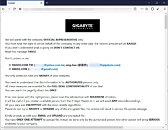
New Linux RCE Vulnerability Leaks Ahead of Disclosure - Allows Arbitrary Code Execution via CUPS Print Scheduler
A new vulnerability was recently discovered in a widely used print server that is installed by default on many Linux and Unix-based systems with a graphical user interface. The primary attack vector for the vulnerability is the CUPS (Common Unit Printing System) print scheduler, specifically cups-browsed, and has the potential to execute code remotely with zero user interaction required.
The vulnerability has reportedly been given a CVSS score of 9.9 by RHEL and Canonical, although this score is hotly debated, with some arguing it should have a lower score, because, although code can be remotely downloaded to the system, it cannot be executed without user intervention. Fortunately, there is no evidence of the vulnerability having been exploited, although the disclosure was leaked online ahead of a planned private reveal in October, prompting the developer that discovered the vulnerability to post the full explanation in a write-up on their blog. This being the case, the vulnerability could very well start being exploited by malicious actors.
The vulnerability has reportedly been given a CVSS score of 9.9 by RHEL and Canonical, although this score is hotly debated, with some arguing it should have a lower score, because, although code can be remotely downloaded to the system, it cannot be executed without user intervention. Fortunately, there is no evidence of the vulnerability having been exploited, although the disclosure was leaked online ahead of a planned private reveal in October, prompting the developer that discovered the vulnerability to post the full explanation in a write-up on their blog. This being the case, the vulnerability could very well start being exploited by malicious actors.


















































